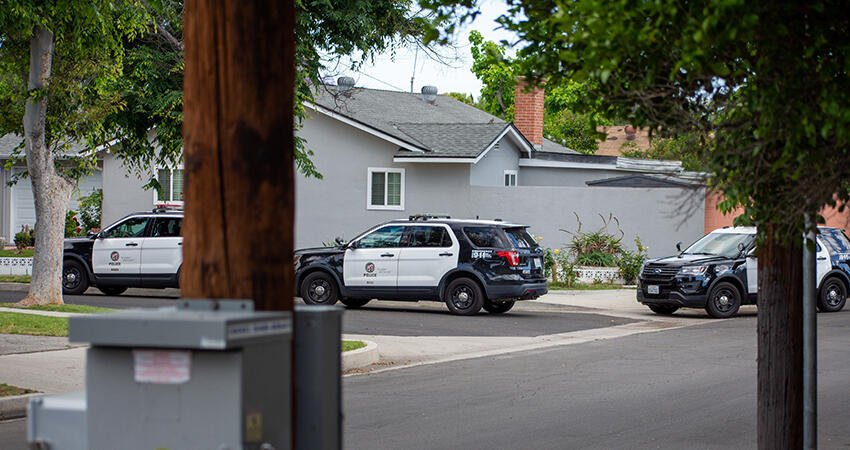
How Are Racism, Housing, and Policing Connected?
- Title:
-
Race and ethnicity I: Property, race, and the carceral state
- Author:
-
Anne Bonds
- Source:
- Publication Date:
-
2018
Critical scholars and activists approach research on historical and current inequities through a framework that reveals and challenges the power structures that produce inequity and injustice. This is in direct contrast to “noncritical” or “traditional” studies that identify and measure inequity without substantively challenging underlying systems, such as capitalism and white supremacy, that historically and presently produce these outcomes. Many critical housing scholars start from the premise that in the history of property ownership in the United States is built on the violent colonization of Indigenous peoples’ lands, the enslavement of Black people, and the broad exploitation of laborers. In this article, author Anne Bonds expands critical housing studies through an overview of the history of segregation and housing in Milwaukee, Wisconsin to show the links between the city’s housing crisis and its expansion of policing.
Bringing together research across the fields of critical geography, critical carceral studies, and racial capitalism, Bonds synthesizes more than 70 articles to build the case that racism, contemporary housing policies, and carceral expansion build upon and reinforce each other. Bonds’ argument is founded on the assertion that the construction of racial difference, particularly Blackness, is essential to how capitalism works. Through this framework of “racial capitalism,” racist socioeconomic and housing outcomes aren’t seen as unfortunate consequences of capitalist shortcomings, but instead as the very conditions that allow capitalism to be reproduced over time. Bonds applies this framework to illuminate the role of displacement, gentrification, eviction, and speculative planning and development in maintaining racial capitalism and white supremacy. By centering property as key to constructing race, Bonds argues that housing policies define and create areas of belonging and punishment, reproducing historic genocide, dispossession, and loss. This synthesis seeks to offer a new, generative framework for housing studies that is useful for researchers, practitioners, and advocates.
Bonds grounds this analysis in the specific case of Milwaukee, Wisconsin, but argues that federal housing and planning policies reinforced segregation in many other cities as well, and that majority-Black neighborhoods were and are the subject of disproportionately intense policing across the United States. Bond concludes that low-income neighborhoods of color were created through federal policy, systemic racial exclusion, and ongoing efforts to hoard suburban municipal resources and are maintained by ongoing surveillance and routine police contact in the name of “public safety” and “neighborhood improvement,” which, among other punitive measures of social control, solidifies the ways that property and housing are intertwined with the carceral state.
Key findings
- In Milwaukee, racism, economic growth, and the federal subsidization of suburban homeownership encouraged and enabled white people to build exclusive suburbs, and these same housing policies, along with low-income housing and urban renewal programs, further concentrated Black populations in the city’s highly surveilled inner core.
- In the 1960’s, Milwaukee’s then-police chief Harold Breier falsely attributed 80 percent of the city’s crime to Black neighborhoods to justify intensified policing. This criminalization of Blackness reinforced segregation and legitimized disinvestment, curtailing mobility, and supporting state surveillance in Milwaukee’s low-income neighborhoods of color.
- The protection of white property interests and wealth accumulation are fundamentally connected to policing practices like “broken windows policing,” public housing surveillance, white vigilantism, and how carceral systems “manage” urban space.
- Current debates about residential property rights and housing access, when framed in terms of the market and “opportunity,” are deracialized and obscure the fact that housing markets require massive intervention and investment by “law and order politics” to maintain white peoples’ property and wealth.
Research and policy implications
Although this article aims to influence the development of critical geographic studies, the framework and findings have applicability for policymakers and practitioners.
- Critical racial histories of neighborhoods, property, and housing are necessary to fully understand contemporary patterns of segregation and policing.
- Researchers, practitioners, and policymakers should pay attention to the ways reformist approaches to policing may further entrench and extend carceral systems into Black communities, other communities of color, and low-income communities.
- Deep, sustained engagement with Black, Indigenous, feminist, queer, and anticolonial knowledge, community movements, and research is seen by many as essential to achieving meaningful progress toward housing justice.
- Frameworks to explore relating to housing and policing include abolitionist, antiracist, feminist, anticapitalist, and decolonial studies.
Photo by Glenn Highcove/Shutterstock


